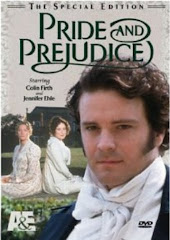Part I:
Nanapush, one of two first-person narrators. He is an old and authoritative Chippewa speaking to his “adoptive” daughter, Lulu, as he tries to dissuade her from marrying one of the Morrisseys. Named for his tribal trickster figure, he is a survivor along with Fleur (whom he has saved) of the consumption epidemic of 1912 and a mythic figure in his own right. He claims to have guided the last buffalo hunt, seen the last bear shot, and trapped the last beaver with a pelt of more than two years’ growth.
Pauline Puyat, a young mixed-blood woman whose unreliable narration moves from prevarication to madness in the course of the book. She is from a family of despised “skinners” of fur with no clan name. She is obsessed with Fleur Pillager, whose brief and tragic career in Argus and later troubles on the reservation (some of Pauline’s making) she chronicles with increasingly vicious relish, to an indeterminate audience. Torn between fleshly desire (she bears a baby, Marie, whom she then abandons) and bizarre imagings mixing Native American and Catholic beliefs, she passes herself off as white and becomes a nun.
Fleur Pillager, rescued by Nanapush from her familial cabin on Lake Matchimanito during an epidemic. Tall, strong, and attractive, she is said to be the lover of Misshepeshu, the lake’s spirit, who protects her from drowning and gives her power over her enemies. During a summer working in Argus at Kozkas’ butcher shop, she angers three male employees by winning repeatedly at cards. They rape her in revenge, and she (perhaps) calls forth the tornado that destroys them. Because these events are related only by Pauline, Fleur’s character remains enigmatic, as does the parentage of her child, Lulu. With the encroachment of whites, her magic is no longer dependable.
Eli Kashpaw, the son of Margaret (Rushes Bear) and lover of Fleur. He is the father of their dead child. He is caught between the woods where, like Fleur, he feels most at home, and the assimilative instincts of his mother and his brother, Nector.
Margaret Kashpaw, the fourth wife of Nanapush, mother to eighteen children, and betrayer (along with her practical son, Nector) of both Nanapush and Fleur. She uses their combined and hard-earned money to pay late fees on Kashpaw property only, so Nanapush’s property is forfeited to the encroaching lumber company.
Lulu Pillager, the daughter of Fleur, a beautiful, wild, somewhat spoiled child. Sent to government school by her desperate mother, then retrieved by Nanapush and Margaret, she listens restlessly to Nanapush’s part of the tale.
Maureen Fries. "Tracks." Cyclopedia of Literary Characters, Revised Third Edition. Salem Press, 1998. 5 Jun, 2009
Part II:
The most important character in Tracks is Fleur Pillager, a strong and beautiful woman, who seems to be a shaper of the forces of the land, particularly those of a lake near her home. Unlike Erdrich's previous novels in which nearly all the significant characters have a narrative voice, Fleur is seen only through two other characters: Nanapush, a wise, fun-loving tribal leader, and Pauline Puyat, a tormented mixed breed who envies Fleur's beauty and power. Nanapush's view of Fleur is friendly and caring; Pauline is fearful and shows a desire to humiliate a rival. Both views establish Fleur as an almost mythic figure. If Fleur spoke in her own voice, it would be harder for Erdrich to project Fleur's mythic dimension.
When Fleur succeeds in getting the money to pay her family's land fees and live the life of her ancestors, the test for her culture is whether she can find a traditional man — brave, responsible, and a good hunter — with whom to raise a family. Eli Kashpaw represents such a man, and the quality of their love is a measure of the tribe's success. The tribe feels and appreciates their symbolic role, as if Eli and Fleur were winning a victory for them through their love.
Pauline, who also loves Eli, disrupts the relationship by setting up a sexual liaison for Eli with a young girl whom she hopes will destroy his love for Fleur. The plot temporarily works, but it is the death of Fleur and Eli's baby and a crooked land deal by Eli's brother, Nector, that effectively ends Eli and Fleur's relationship.
Pauline is usually present for the negative crises in Fleur's life: her rape in Argus, the childbirth that results in death, and her dispossession from her land. Nanapush, on the other hand, vicariously participates in the love of Eli and Fleur, since he acts as Eli's confidant. Pauline's narrations are filled with horror, gloom, and perversity, while Nanapush is the source of nearly all of the novel's humor.
Margaret Kashpaw, Eli's mother, is an important character. Nanapush comes to love her, and he, along with Fleur, is betrayed by her. Since Margaret is proud and seems loyal, her swindle regarding the tax money is difficult to accept; she seems to have strength of character and honesty. When people such as this in a culture crack, little can be done to keep that culture together. Small wonder that Fleur attempts to kill herself, Unsuccessful, she eventually leaves the reservation with a cart, the same one we see her with in The Beet Queen (1986). Nothing is left in her culture to protect.
Craig Barrow. "Tracks: Characters." Beacham's Encylopedia of Popular Fiction. Ed. Kirk H. Beetz. Vol. 7. Beacham-Gale, 1996. 8 June 2009.
Monday, June 15, 2009
Subscribe to:
Post Comments (Atom)





No comments:
Post a Comment
Note: Only a member of this blog may post a comment.